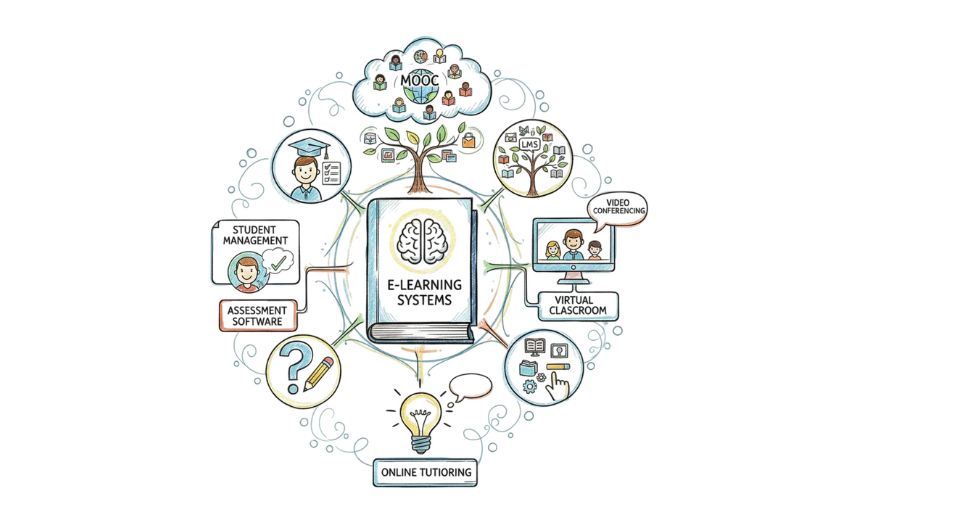
Oct 29, 2025

In an era of accelerated digital connectedness and remote work and learning patterns, the global e-learning market holds out the potential to redefine how learning takes place for people, organisations and society. With geography, time and traditional classroom boundaries dissolving, this market provides nimble, scalable access to learning, upskilling and lifelong learning making it very timely now. The Metastat Insight global e-learning market research reflects this trend and suggests widespread change in the making.
Market context: current challenges and evolving needs
There are several pressures converging to stimulate demand for new learning models. In the first place, skill-gaps within most sectors and the rapid pace of technological change make sure that conventional education and training techniques are either too slow or too inflexible. Secondly, logistic and geographical boundaries still limit access to effective learning throughout the majority of the globe.
Thirdly, organisations are being forced to incur higher training costs and provide tangible return on investment from development programs. To counter this, the global e-learning market steps in as a critical enabler: online infrastructure, adaptive learning and remote access help to reduce cost, increase reach and accelerate learning outcomes. Therefore, the market is not so much about taking courses online, but about offering learning when, where and how it is needed.
How it works / why it delivers value
Essentially, the global e-learning market offers technology-driven provision of learning content using learning management systems (LMS), mobile apps, virtual classrooms, interactive units, micro-learning and adaptive systems. Since content is digital and available at any time, students can learn at their own pace, see previous work, and view analytics on performance. From the perspective of organisations, this translates to simpler monitoring of training effectiveness, improved scalability and standardised delivery across regions.
Distinct benefits include flexibility of delivery, cost-effectiveness in comparison with face-to-face training, possibility of personalising learning routes and engaging learners remotely. Applications vary from formal education (K-12 and higher), corporate training and professional development, to industry certifications and non-formal lifelong learning.
Growth story / technological advancement
The market grew quietly in the beginning as corporates, training institutes and universities experimented with e-learning modules. The pandemic accelerated adoption suddenly, compelling educational institutions online and companies to invest heavily in digital learning. Technology breakthroughs mobile-first design, cloud infrastructure, adaptive learning using artificial intelligence, gamification and virtual/augmented reality have taken engagement and effectiveness to unprecedented heights. Over time, the worldwide e-learning industry has matured from straightforward web-based courses to immersive data-driven experiences that now compete with classroom delivery for the majority of use cases.
Regional and global trends
Highest adoption is in North America and Europe where infrastructure, business budgets and digital readiness are highest. For example, North America has a leadership role in services segments. The Asia-Pacific is expanding rapidly, driven by government initiatives, mobile penetration, and vast amounts of users who want to reskill and upskill through the internet. India and China in Asia particularly have robust momentum for the e-learning market globally. Other areas in emergence like Latin America and Middle East & Africa regions also began embracing digital models of learning at scale, presenting future growth prospects. Challenges and opportunities ahead
Among the principal challenges for the worldwide e-learning market are disparities of access to the internet or bandwidth scarcity in particular geographies, variations in content and learner engagement quality, issues pertaining to certification and accreditation, and competition with traditional models of education.
Conversely, there are more opportunities: analytics and AI-based integration for adaptive learning, increasing micro-learning (bite-sized, targeted modules) demand, up-skilling in business related to digital transformation, partnership between education providers, tech firms and employers. Coordination of learning with work, and intensifying expectation of continuous renewal of skills, set the market on the path of growth and innovation ahead.
Why it matters now
In a world where digital transformation, remote work, globalized skills and lifelong learning are not options but imperatives, the global e-learning market sits at the intersection of major trends. With individuals searching for new career paths, organisations trying to design flexible workforces, and nations looking to increase digital levels of competence, this market offers infrastructure and delivery with relevance to those goals. The Metastat Insight report on global e-learning market suggests that it is not a story of future-knowingness, but of today-enablement – and it will have even greater impact as education, training and the workplace continue to become more integrated.
Drop us an email at:
Call us on:
+1 214 613 5758
+91 73850 57479